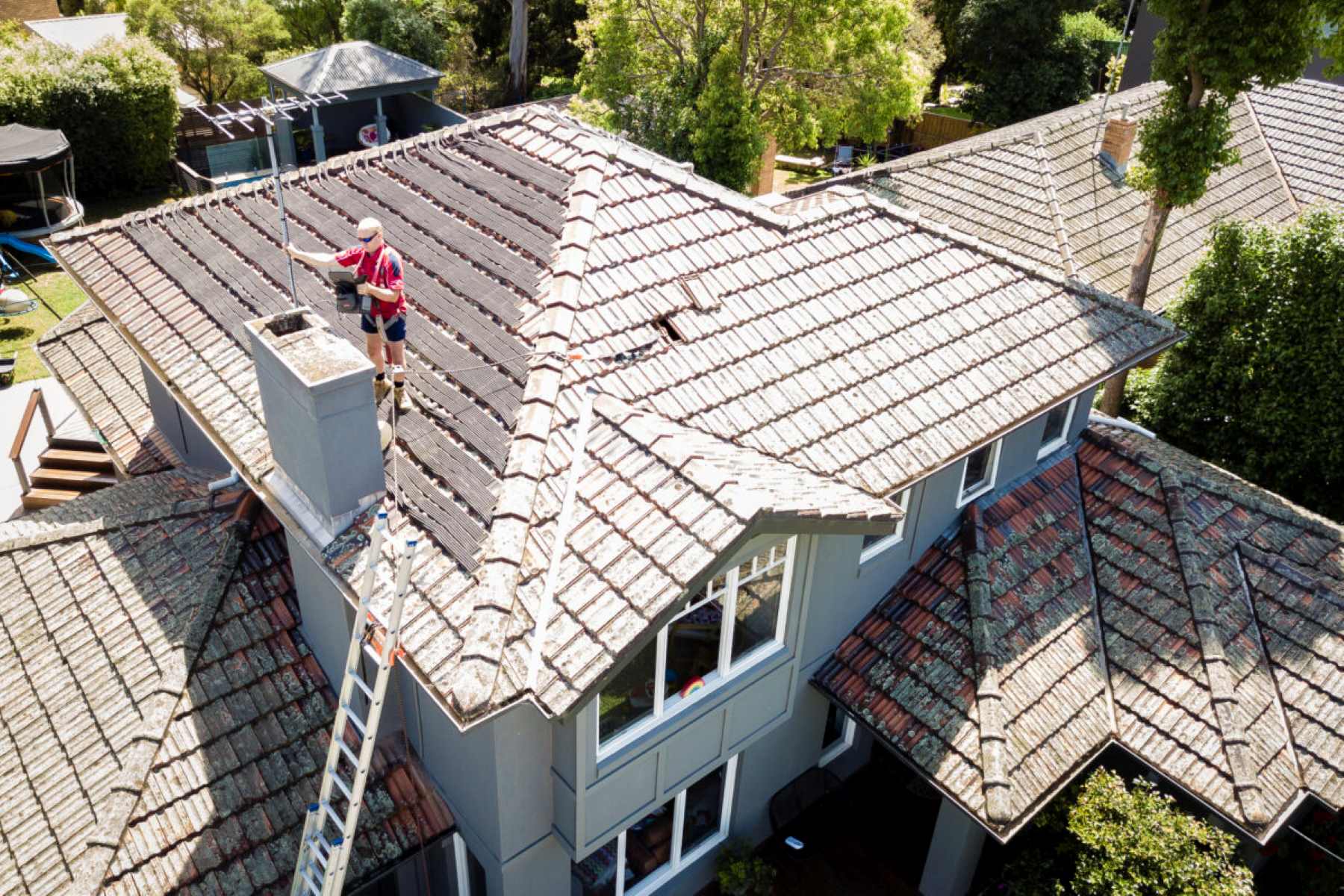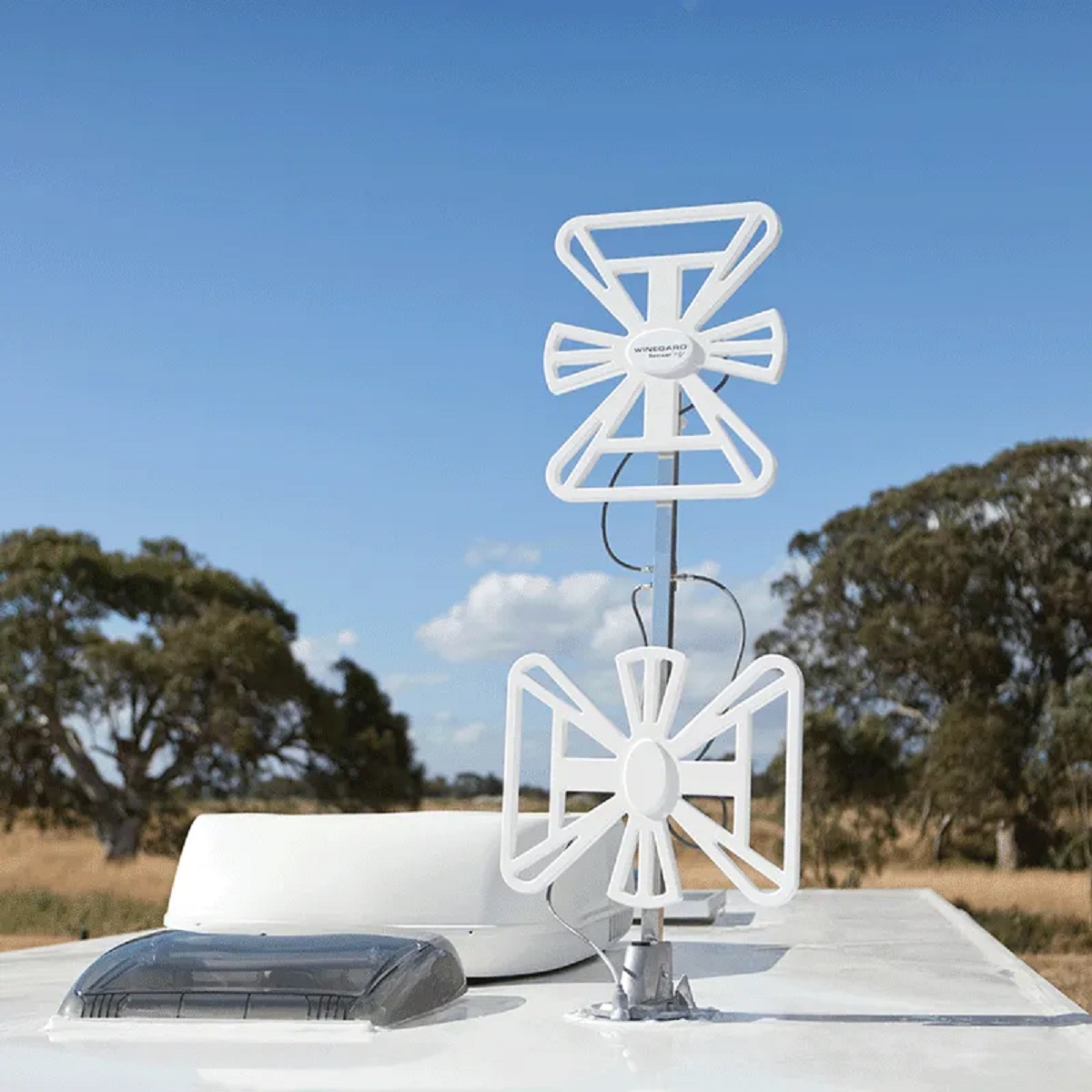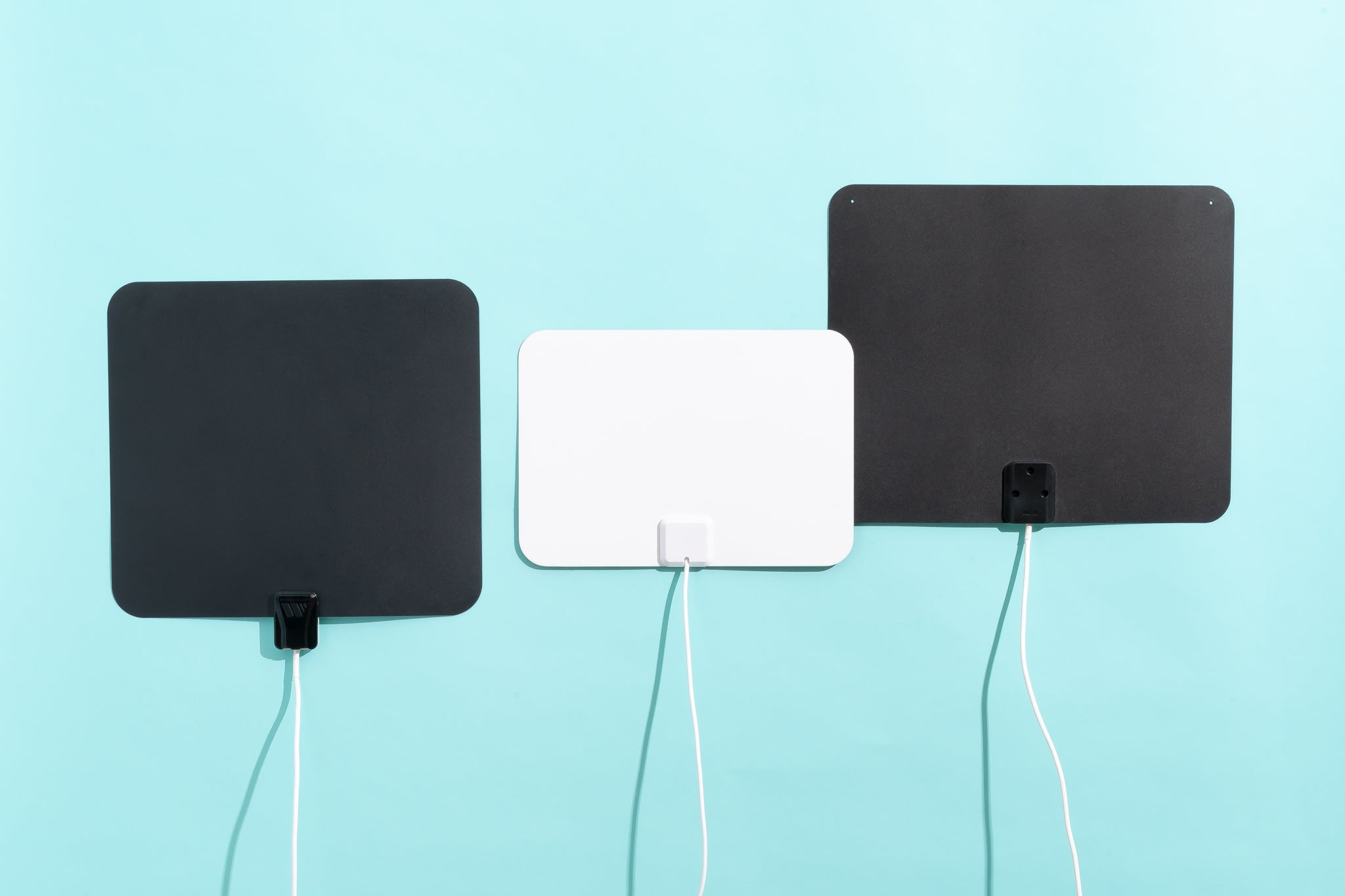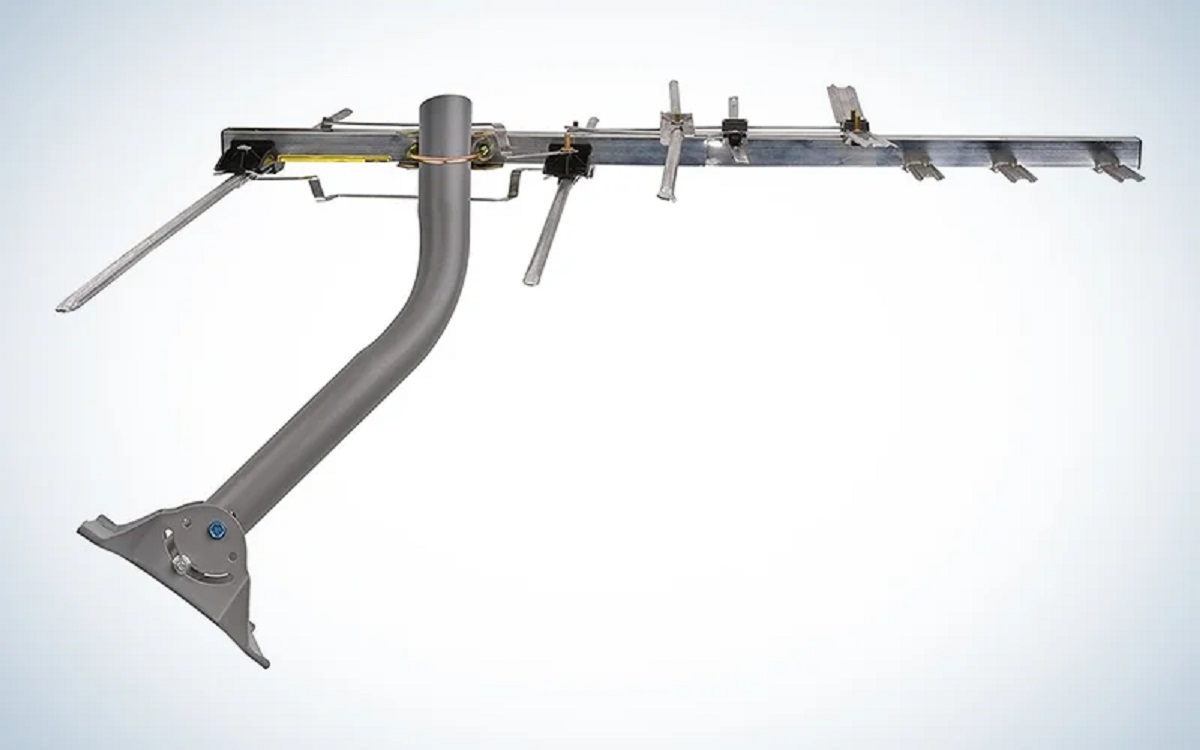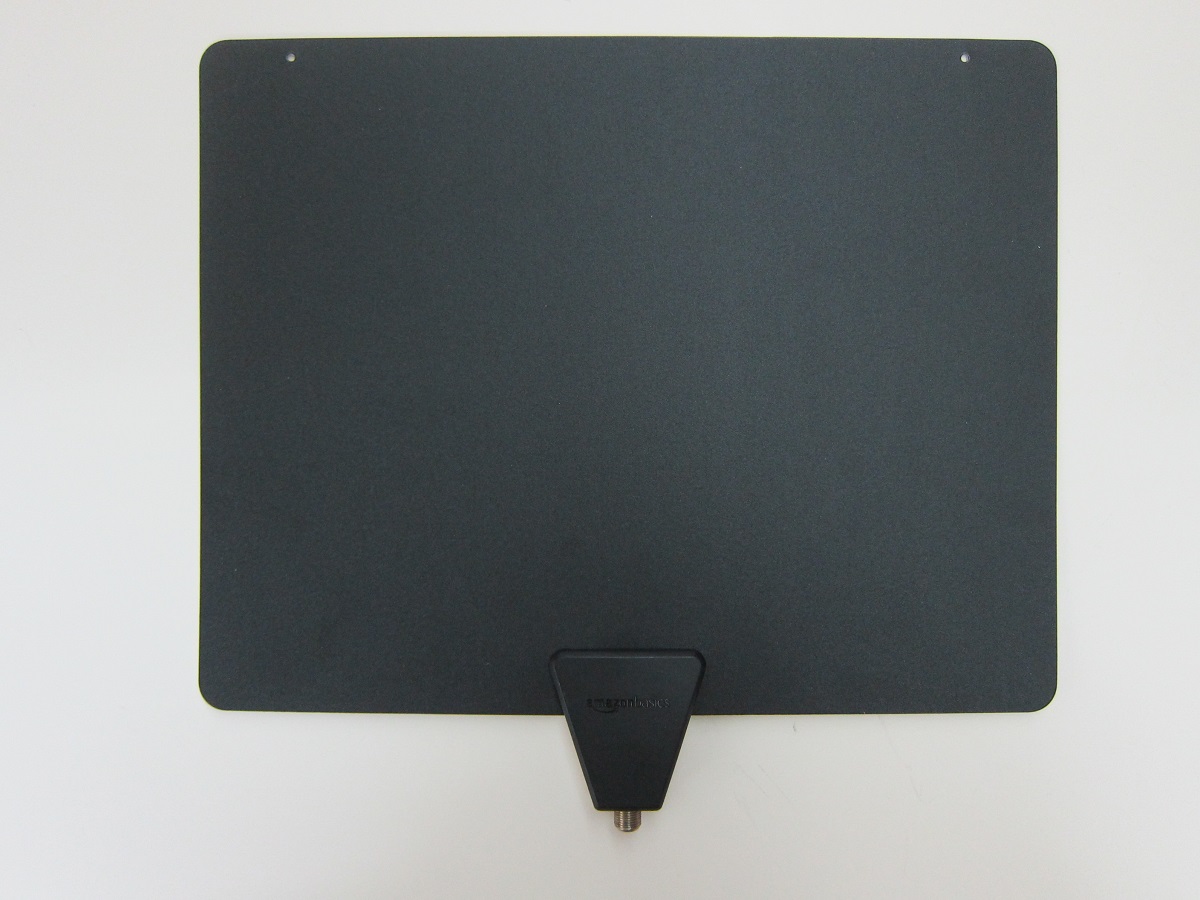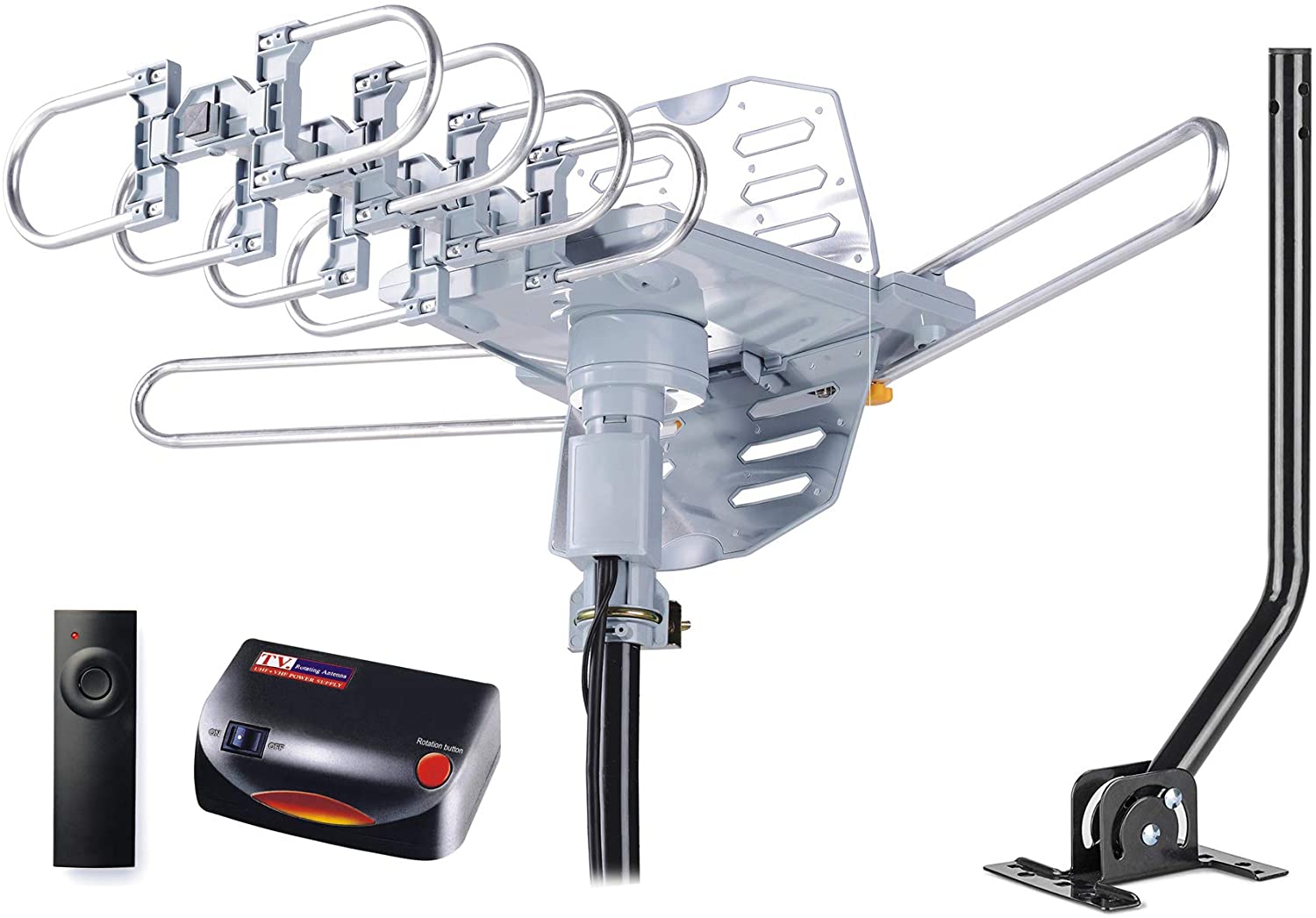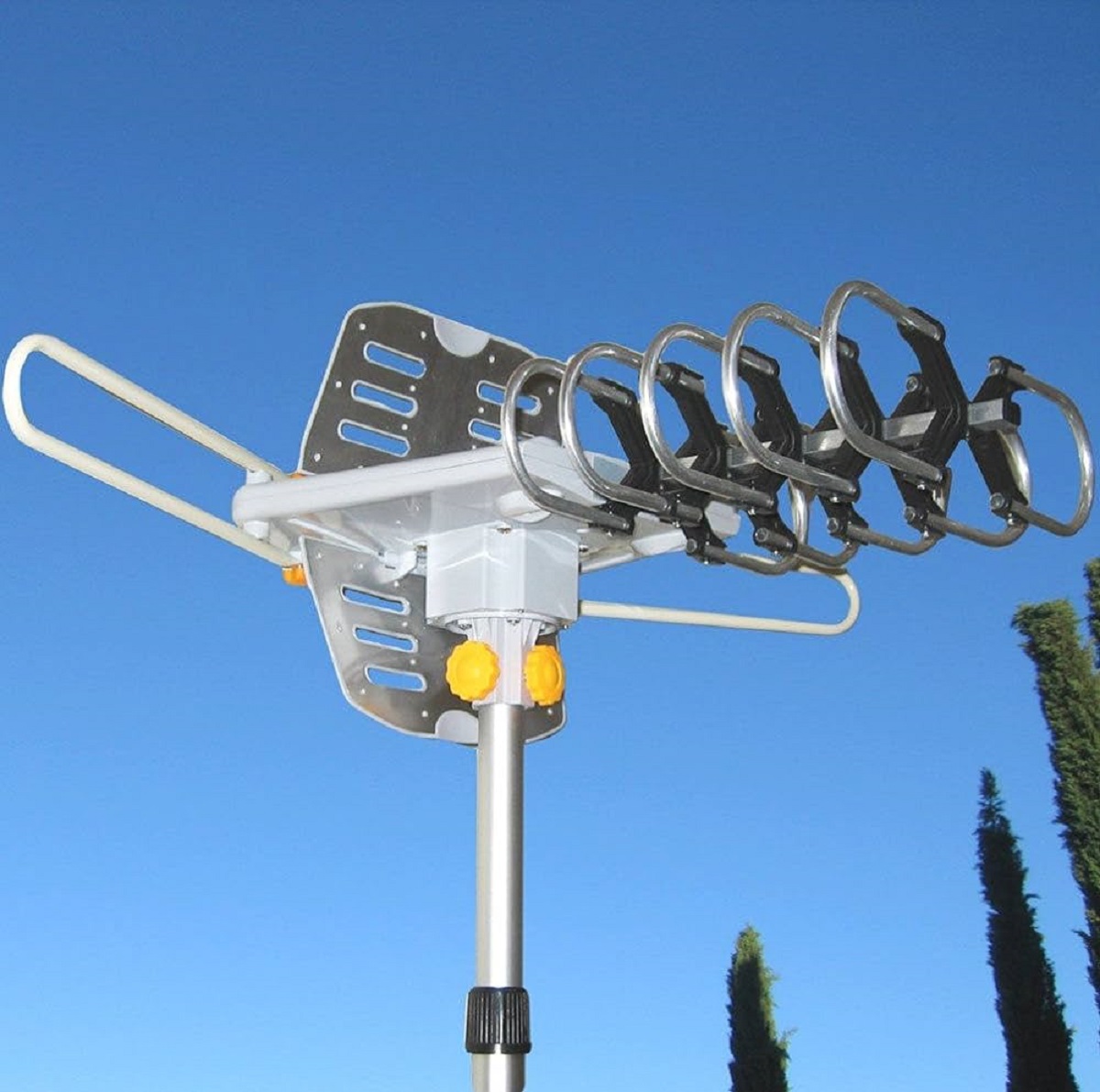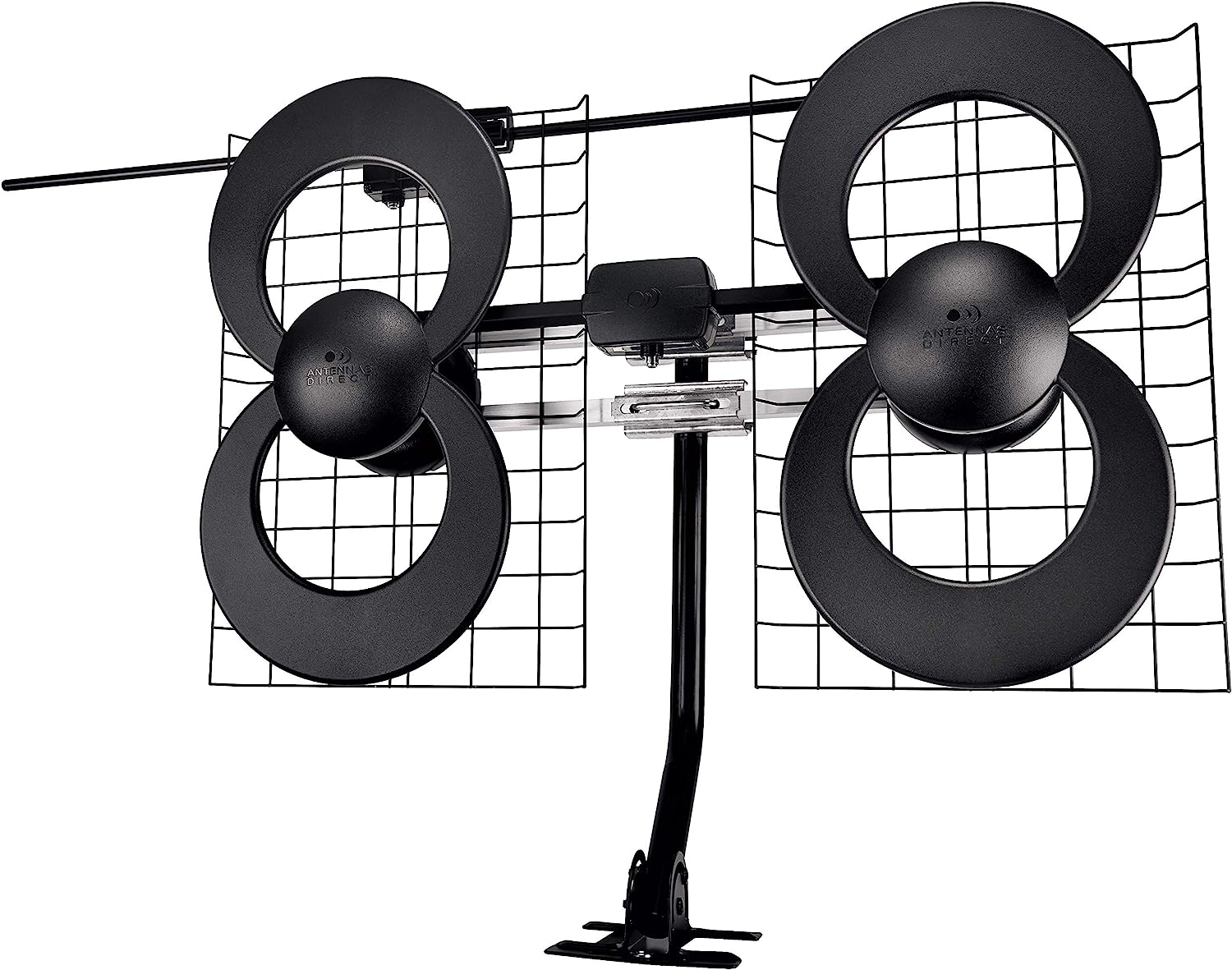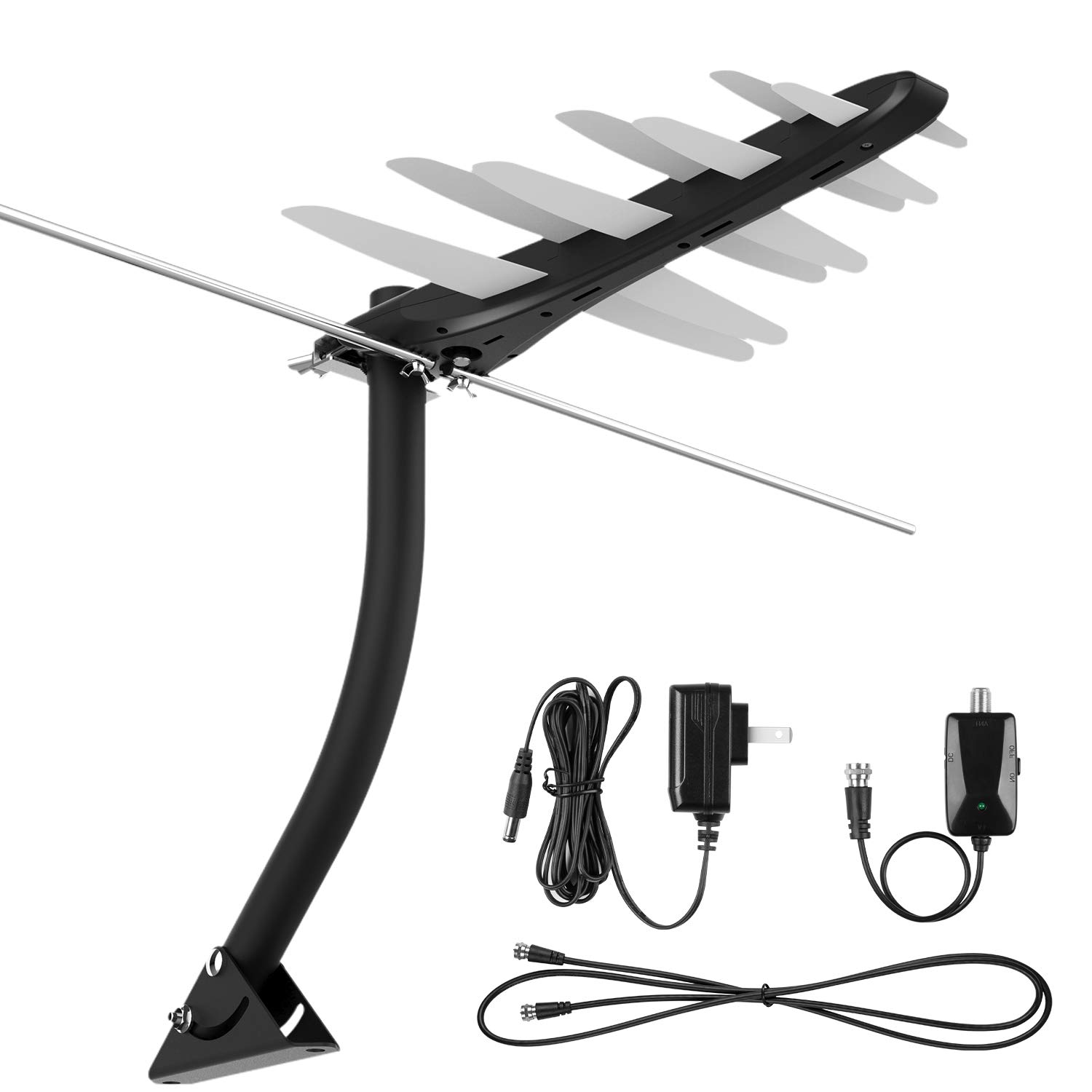Factors to Consider when Installing a TV Antenna
When it comes to installing a TV antenna, there are several important factors to consider. Making the right choices can ensure optimal reception and a satisfactory viewing experience. Here are some key factors to keep in mind:
1. Location: The location of your home plays a crucial role in determining the type of TV antenna you should install. Factors such as distance from broadcast towers, terrain, and nearby obstructions like buildings and trees can impact signal strength. Conducting a signal analysis or consulting a professional can help you choose the best antenna for your specific location.
2. Signal Strength: Consider the quality and strength of the TV signals available in your area. You may need to install a more powerful antenna if you live in a rural or remote area with weak signals. On the other hand, if you reside in an urban area close to TV stations, a basic indoor antenna might suffice.
3. Antenna Type: There are various types of TV antennas available, including indoor and outdoor models. Indoor antennas are typically smaller and easier to install, but they may have limited range and weaker reception compared to outdoor antennas. Outdoor antennas, though more expensive and complex to install, can provide better reception and access to more channels.
4. Mounting Options: Decide whether you want a rooftop, attic, or wall-mounted antenna. Rooftop installations generally provide better reception due to higher elevation and fewer obstructions, but they require professional installation and can be more expensive. Attic or wall-mounted antennas offer a more discreet option and might be suitable if you live in an area with strong signal coverage.
5. Additional Equipment: Consider whether you will need additional equipment such as amplifiers, mast or mounting brackets, grounding kits, or coaxial cables. These accessories can improve signal quality and protect your system from lightning strikes or power surges. However, they can also add to the overall cost of the installation.
6. Budget: Set a realistic budget for your TV antenna installation, including both the equipment and professional installation costs if applicable. Keep in mind that while cheaper options may be tempting, investing in high-quality equipment and professional expertise can often yield better results in terms of signal reception and longevity.
Remember, each installation is unique, so it’s important to assess your specific needs and consult with professionals if needed. By considering these factors, you can make informed decisions and enjoy a reliable and high-quality TV viewing experience.
The Cost of the TV Antenna
When planning to install a TV antenna, it’s essential to consider the cost involved. The price range can vary depending on several factors, including the type and quality of the antenna you choose. Here are some key points to keep in mind:
1. Basic Indoor Antennas: If you live in an urban area close to TV stations and have strong signal coverage, a basic indoor antenna might be sufficient. These antennas are typically more affordable, with prices ranging from $10 to $50. However, keep in mind that they often have a limited range and may not provide optimal reception if you live farther from broadcast towers or have obstructions.
2. Outdoor Antennas: Outdoor antennas generally provide better reception and access to more channels compared to indoor models. The cost of outdoor antennas can vary depending on their range, design, and quality. Prices typically range from $50 to $200 or more. Consider factors such as signal strength in your area and the distance from broadcast towers when selecting an outdoor antenna.
3. Amplifiers and Accessories: Depending on your situation, you may need additional accessories such as amplifiers, mounting brackets, grounding kits, or coaxial cables. These items can improve signal quality and protect your system. The cost of these accessories can range from $10 to $100 or more, depending on the brand and quality.
4. Professional Installation: If you are not confident in your DIY skills or if you require a more complicated installation, hiring a professional antenna installer is an option. The cost of professional installation can range from $100 to $500 or more, depending on the complexity of the project and the location of your home. Factors such as roof accessibility and the need for additional equipment or cable routing can impact the overall cost.
5. Maintenance and Warranty: It’s important to consider ongoing maintenance and warranty costs when budgeting for a TV antenna installation. Some antennas may require periodic adjustments or maintenance to ensure optimal performance. Additionally, check the warranty coverage for the antenna and any related equipment to understand potential repair or replacement costs in the future.
Keep in mind that these price ranges are approximate and can vary depending on the brand, quality, and location. It’s always advisable to research and compare prices from different retailers or service providers to find the best deal for your specific requirements.
By understanding the cost factors associated with TV antenna installations, you can make an informed decision and budget accordingly. Remember, the investment in a good-quality antenna and professional installation, if required, can pay off in terms of improved signal reception and long-term satisfaction.
The Size and Type of the TV Antenna
When it comes to choosing a TV antenna, the size and type play a crucial role in determining its effectiveness in receiving signals. Here are some important considerations to keep in mind:
1. Television Signal Bands: TV signals are broadcasted in two frequency bands: VHF (Very High Frequency) and UHF (Ultra High Frequency). VHF channels typically range from 2 to 13, while UHF channels range from 14 to 51. When selecting an antenna, ensure that it supports both VHF and UHF signals to receive all available channels in your area.
2. Single-Directional vs. Multi-Directional Antennas: Single-directional antennas are designed to receive signals from a specific direction. They are suitable if all the TV stations in your area are located in one direction. On the other hand, multi-directional antennas can receive signals from various directions, making them ideal if the TV stations are spread out in different locations.
3. Outdoor vs. Indoor Antennas: The choice between outdoor and indoor antennas depends on factors such as signal strength, proximity to broadcast towers, and local obstructions. Outdoor antennas, typically larger and more powerful, are installed on rooftops or in attics and offer better reception, especially in areas with weak signals or significant obstructions. Indoor antennas, on the other hand, are smaller and more compact, suitable for areas with strong signals or limited space.
4. Antenna Gain: Antenna gain refers to its ability to receive signals. Higher gain antennas are more sensitive and can pick up weaker signals from greater distances. However, using a high-gain antenna may not always be necessary and can sometimes lead to interference from strong nearby signals. Consider your location and signal strength when selecting an antenna with the appropriate gain.
5. Size and Aesthetics: The size of the antenna can be a determining factor in your choice, especially for indoor installations. Smaller, more discreet antennas are easier to blend into your home decor. However, larger antennas often offer better reception due to their increased surface area and improved signal capturing capabilities.
6. Budget and Long-Term Needs: Evaluate your budget and long-term needs when selecting the size and type of the TV antenna. While larger and more powerful antennas may come with a higher price tag, they might be worth the investment if they provide better reception and access to more channels. Consider the longevity of the antenna and whether it can serve your needs as TV technology evolves in the future.
Remember to carefully assess your specific requirements, including factors such as signal strength, location, and available space, to choose the size and type of TV antenna that will provide optimal performance and ensure an enjoyable viewing experience.
Additional Components and Equipment
When installing a TV antenna, there are several additional components and equipment that may be required to ensure optimal performance and functionality. Here are some important factors to consider:
1. Amplifiers: Amplifiers, also known as signal boosters, can enhance weak signals and improve reception. They are especially useful if you live in areas with long cable runs, multiple TV outlets, or weak signal coverage. Amplifiers come in different types and strengths, so it’s important to choose one that matches your specific needs.
2. Mast or Mounting Brackets: Depending on the type of antenna and installation location, you may need a mast or mounting brackets to secure the antenna. Masts provide stability and elevation for outdoor antennas, while mounting brackets can be used for rooftop or wall installations. Ensure that the mast or mounting brackets are compatible with your chosen antenna and can withstand environmental factors such as wind and weather.
3. Coaxial Cables: Coaxial cables are essential for connecting the antenna to your TV or digital converter box. High-quality coaxial cables help maintain signal integrity and reduce signal loss. The length of the cable needed depends on the distance between the antenna and TV, so measure beforehand to ensure you have the appropriate length of cable.
4. Grounding Kits: Grounding the antenna and related equipment is critical to protect against lightning strikes and power surges. Grounding kits include grounding rods, clamps, and wires that ensure a proper electrical ground connection. Consult local electrical codes and regulations to determine the necessary grounding requirements for your particular installation.
5. Splitters: If you plan to connect multiple TVs using a single antenna, you may need a splitter. Splitters allow you to split the antenna signal into multiple outputs, enabling you to distribute the signal to different televisions in your home. Ensure that the splitter supports the appropriate frequency range and that the signal is not significantly degraded when split.
6. Surge Protectors: To protect your TV and associated equipment from power surges and voltage spikes, consider using surge protectors. Surge protectors help safeguard against damage caused by lightning strikes or electrical faults, ensuring the longevity of your devices.
When selecting additional components and equipment, consider factors such as signal strength, the number of TVs or devices to be connected, and any specific requirements in your area. It’s advisable to consult with a professional or do thorough research to determine the necessary components to optimize your TV antenna installation.
Labor Costs and Professional Installation
While installing a TV antenna can be a DIY project, professional installation is an option worth considering, especially for those who lack the necessary skills or prefer to have a hassle-free experience. Here are some key points to understand regarding labor costs and professional installation:
1. Complexity of Installation: The cost of professional installation can vary based on the complexity of the project. Factors such as the type of antenna, mounting location, cable routing, and potential obstructions play a role in determining the level of difficulty. Rooftop installations and those requiring additional equipment or complex setups usually incur higher labor costs.
2. Skill and Expertise: Professional installers possess the skill and expertise necessary to ensure a successful antenna installation. They are familiar with the best practices, industry standards, and local regulations. Additionally, they have the necessary tools and equipment to efficiently complete the job, saving you time and potential frustration.
3. Time and Effort: Installing a TV antenna can be time-consuming, especially if it involves climbing rooftops, aligning antennas, and routing cables. Professional installers can efficiently handle these tasks, ensuring proper installation and minimizing any potential damage to your property.
4. Cost versus Value: While professional installation comes with a cost, it can provide added value in terms of convenience, expertise, and peace of mind. By hiring a professional, you can have confidence in the quality of the installation, potentially eliminating the need for troubleshooting or costly repairs down the line.
5. Labor Cost Range: The cost of professional installation typically ranges from $100 to $500 or more, depending on various factors such as location, complexity, and any additional services required. It’s advisable to obtain quotes from multiple installers and compare the services offered, ensuring they meet your specific needs and budget.
6. DIY Consideration: If you have the necessary skills and confidence, DIY installation may be a viable option to cut costs. It’s important to carefully follow instructions, consider safety precautions, and research the best practices for antenna installation. However, if you are unsure or have a more complex installation scenario, it is recommended to seek professional assistance.
Ultimately, the decision between professional installation and DIY largely depends on your comfort level, time availability, and the complexity of the installation. Hiring a professional can provide a smoother installation process, optimal signal reception, and long-term satisfaction knowing that the job is done right.
Permit Fees and Regulations
When planning to install a TV antenna, it’s important to be aware of any permit requirements and regulations that may apply in your area. Here are some key aspects to consider regarding permit fees and regulations:
1. Local Regulations: Different localities may have specific rules and regulations regarding the installation of TV antennas. These regulations can vary, so it’s crucial to research and understand the requirements specific to your area. Some common regulations include height limitations, setback requirements, and restrictions on antenna size or placement.
2. Building Codes: In addition to local regulations, building codes may also impact the installation of TV antennas. Building codes ensure the safety and structural integrity of properties. Familiarize yourself with any applicable building codes to ensure compliance during installation.
3. Permit Requirements: Some jurisdictions require permits for TV antenna installation. Permit requirements may include submitting an application, paying a fee, and obtaining approval from the local authority. The cost of permits can vary depending on the locality and the type of installation being performed.
4. Homeowners’ Associations (HOAs): If you live in a community governed by a homeowners’ association, there may be additional rules and regulations to consider. HOAs often have guidelines on the type, size, and placement of antennas to maintain the desired aesthetics of the neighborhood. Review your HOA’s bylaws or consult with the association before proceeding with the installation.
5. Permit Fees: Permit fees can vary depending on the location and the complexity of the installation. They can range from a nominal fee to several hundred dollars. It’s important to budget for permit fees when planning your antenna installation to avoid any unexpected costs.
6. Compliance and Penalties: Failure to comply with local regulations and permit requirements can result in penalties, fines, or the need to remove or modify the antenna. Non-compliance can also lead to legal issues or strained relationships with neighbors or homeowners’ associations. It’s best to follow the regulations and obtain any necessary permits to ensure a smooth and trouble-free installation process.
Remember that the specific permit requirements and regulations regarding TV antenna installation may vary depending on your location. It’s essential to research, understand, and comply with the rules and regulations set forth by your local authority, building codes, or homeowners’ association to ensure a compliant and successful installation.
Maintenance and Warranty Costs
When installing a TV antenna, it’s important to consider the maintenance and warranty costs associated with the equipment. Proper maintenance and a reliable warranty can ensure the longevity and optimal performance of your antenna system. Here are some key points to keep in mind:
1. Regular Maintenance: Like any other electronic device, TV antennas require regular maintenance to ensure optimal performance. This can include cleaning the antenna, inspecting connections and cables for damage, and checking for any signs of wear or corrosion. Regular maintenance helps prevent signal degradation and extends the lifespan of your antenna.
2. Replacement Parts: Over time, certain components of your antenna system may need to be replaced. This can include damaged or worn-out cables, connectors, or mounting hardware. The cost of replacement parts will vary depending on the specific components and their quality. It’s important to use high-quality replacement parts to maintain signal integrity and prevent signal loss.
3. Warranty Coverage: When purchasing a TV antenna, it’s essential to consider the warranty offered by the manufacturer. A reliable warranty protects you against manufacturing defects and ensures that you can receive a replacement or repair if needed. Understand the terms and conditions of the warranty and any limitations or exclusions that may apply to specific components or circumstances.
4. Extended Warranty Options: Some manufacturers or retailers may offer extended warranty options for an additional cost. These extended warranties provide additional coverage beyond the standard warranty period. Consider the cost of the extended warranty and weigh it against the potential benefit of having extended protection for your antenna system.
5. DIY Maintenance versus Professional Help: Some maintenance tasks can be easily performed as do-it-yourself (DIY) projects, such as cleaning the antenna or checking connections. However, if you are unsure about certain maintenance tasks or encounter issues that require professional expertise, it’s advisable to seek professional help. Professional maintenance can help identify and resolve more complex problems, ensuring the proper functioning of your antenna system.
6. Budgeting for Maintenance: As with any electronic system, it’s important to budget for ongoing maintenance costs to ensure the longevity and reliability of your TV antenna. Consider the potential costs of replacement parts, professional maintenance services, and any additional tools or equipment that may be required for maintenance tasks.
By regularly maintaining your TV antenna system and being aware of warranty coverage, you can minimize the risk of performance issues and ensure a satisfactory viewing experience. Proper maintenance and warranty support will help you get the most out of your investment in a TV antenna.
Hidden Costs and Considerations
When installing a TV antenna, it’s important to be aware of hidden costs and considerations that may arise throughout the process. These factors can impact your budget and overall satisfaction with the installation. Here are some key points to keep in mind:
1. Signal Amplifiers: In some cases, you may need to invest in signal amplifiers to boost weak signals or overcome signal loss due to long cable runs or multiple TV outlets. Amplifiers can add to the overall cost of the installation, so it’s important to factor in this expense if needed.
2. Cable Length and Quality: The length and quality of the coaxial cable used to connect the antenna to your TV or digital converter box can impact signal strength and reception. Longer cable runs may require additional lengths of cable, which can increase costs. Additionally, investing in high-quality, low-loss coaxial cables can help minimize signal degradation.
3. Lightning Protection: If you live in an area prone to lightning strikes, it’s important to consider investing in lightning protection equipment. This includes grounding kits, surge protectors, and any other necessary precautions to safeguard your antenna system from damage caused by lightning-induced power surges.
4. Signal Interference: Signal interference from various sources, such as nearby radio towers or electrical equipment, can impact the quality of your TV reception. If you encounter signal interference, you may need additional equipment, such as filters or shielding materials, to mitigate the interference and improve signal quality. These additional measures can result in additional costs.
5. Upgrading Equipment: Over time, you may need to upgrade certain components of your antenna system to keep up with advancing technology or changes in signal transmission standards. This can include upgrading antennas, cables, connectors, or even purchasing a new TV or digital converter box compatible with the latest signal formats. Budgeting for future upgrades should be considered to ensure that your antenna system remains compatible and future-proof.
6. Local Content Access: While installing a TV antenna provides access to free over-the-air channels, it’s important to note that not all TV stations may be available in your area. Local content availability can vary based on location and proximity to TV broadcast towers. Researching local stations and signal coverage maps will help set realistic expectations and avoid disappointment.
By considering these hidden costs and considerations, you can better plan and budget for your TV antenna installation. Thorough research, understanding your specific needs, and consulting with professionals when necessary will help ensure a smooth installation process and satisfactory TV viewing experience.
DIY vs Professional Installation: Pros and Cons
When it comes to installing a TV antenna, you have the option of doing it yourself (DIY) or hiring a professional installer. Each approach has its own set of pros and cons, and understanding them can help you make an informed decision. Here are some key points to consider:
DIY Installation:
Pros:
- Cost Savings: DIY installation can be more budget-friendly, as you won’t have to pay for professional labor costs.
- Flexibility: You have the freedom to choose when and how to install the antenna, allowing for a flexible timeline.
- Learning Opportunity: DIY installation provides an opportunity to learn more about the equipment, setup process, and troubleshooting techniques.
Cons:
- Technical Knowledge: DIY installation requires a basic understanding of electronics, wiring, and antenna positioning to ensure proper setup.
- Potential Mistakes: Inaccurate installation or alignment could result in poor signal reception and the need for troubleshooting or adjustments.
- Safety Concerns: Climbing ladders or roofs can be hazardous, especially without proper safety equipment and training.
Professional Installation:
Pros:
- Expertise and Experience: Professional installers have the knowledge and experience to ensure proper installation and optimal signal reception.
- Time Savings: Hiring a professional allows you to save time, as they can efficiently handle the installation process and troubleshoot any issues that arise.
- Warranty and Guarantee: Many professional installers offer warranties or guarantees on their work, providing peace of mind and potential recourse if problems occur.
Cons:
- Higher Costs: Professional installation typically incurs labor costs, which can increase the overall expense of the installation.
- Scheduling Constraints: You may need to coordinate appointments and work around the availability of the professional installer.
- Less Control: With professional installation, you may have limited input on certain aspects, such as the exact antenna placement or the specific equipment used.
Consider your comfort level, time availability, budget, and the complexity of the installation when deciding between DIY or professional installation. If you have the technical knowledge and willingness to learn, DIY installation can provide cost savings and a sense of accomplishment. However, if you prefer convenience, expertise, and a guarantee of optimal performance, professional installation may be the preferred choice.
Tips to Save Money on TV Antenna Installation
Installing a TV antenna doesn’t have to break the bank. With some strategic planning and cost-saving measures, you can keep your expenses in check while still enjoying a reliable and high-quality TV reception. Here are some tips to help you save money on TV antenna installation:
1. Do Your Research: Before purchasing a TV antenna, take the time to research different models, brands, and prices. Read customer reviews and compare features to find the best antenna that meets your needs and budget. Being informed about the options available will help you make a cost-effective choice.
2. Consider Indoor Antennas: If you live in an urban area or close to broadcast towers, consider opting for a cost-effective indoor antenna. Indoor antennas are generally more affordable than outdoor ones and are easier to install. Ensure you choose an antenna with adequate range and signal strength for your location.
3. DIY Installation: If you have the technical know-how and confidence, consider installing the TV antenna yourself. DIY installation can save you labor costs, and many antennas come with user-friendly instructions. Just be sure to follow safety precautions and use proper equipment to avoid accidents or damage.
4. Borrow or Rent Tools: If you need specific tools or equipment for antenna installation that you don’t already own, consider borrowing them from a friend or family member. Alternatively, you can check if local hardware stores or community centers offer tools for rent. This way, you can save money on purchasing tools you may only use once.
5. Optimize Antenna Placement: Proper placement of your TV antenna can significantly impact signal reception. Experiment with different antenna positions and orientations to find the best signal. This can help you avoid unnecessary expenses like signal amplifiers or professional adjustments.
6. Check for Local Assistance Programs: Some local governments or organizations offer assistance programs for low-income households to access TV antennas and installation services. Research if there are any programs available in your area that can help offset the costs of installing a TV antenna.
7. Group Installation with Neighbors: Reach out to your neighbors and see if any of them are interested in installing a TV antenna as well. By combining your purchases and hiring a professional installer together, you can negotiate a better price as a group, splitting the labor costs and potentially qualifying for bulk discounts.
8. Regular Maintenance: Properly maintaining your TV antenna can save you money in the long run. Regularly inspect and clean the antenna, check for loose connections or damaged cables, and replace any faulty components promptly. Timely maintenance prevents costly repairs or the need for a complete replacement.
By following these tips, you can make smart choices and save money on your TV antenna installation. With careful planning, research, and cost-saving measures, you can enjoy a high-quality TV viewing experience without breaking the bank.
Conclusion
Installing a TV antenna is a great way to access free over-the-air channels and enhance your TV viewing experience. By considering various factors such as the cost of the antenna, size and type considerations, additional components and equipment, and professional installation, you can make informed decisions to ensure optimal signal reception and satisfaction.
It’s important to evaluate your specific needs and budget when selecting a TV antenna. This includes considering the strength of TV signals in your area, whether you need an indoor or outdoor antenna, and the potential need for additional components such as amplifiers or splitters. Furthermore, weighing the pros and cons of DIY installation versus professional installation will help determine the best approach for you.
Keep in mind any hidden costs and considerations that may arise during the installation process, such as signal interference, the length and quality of coaxial cables, lightning protection, and potential future upgrades. Understanding the permit fees and regulations applicable to your area is also crucial to ensure compliance with local requirements.
Additionally, being aware of maintenance and warranty costs, as well as following recommended maintenance practices, will help prolong the lifespan and performance of your TV antenna system.
Lastly, by implementing cost-saving strategies such as researching antenna options, considering DIY installation, optimizing antenna placement, and exploring local assistance programs or group installations with neighbors, you can save money on your TV antenna installation.
Overall, with careful consideration of these factors, smart decision-making, and budget-conscious choices, you can enjoy a reliable and cost-effective TV antenna installation that provides access to a wide range of free channels and an enhanced TV viewing experience.







